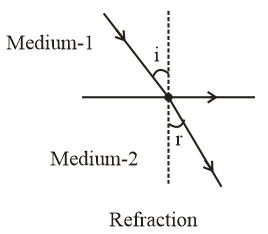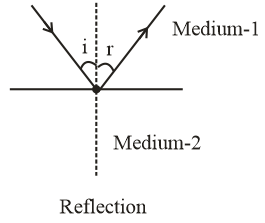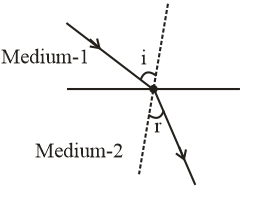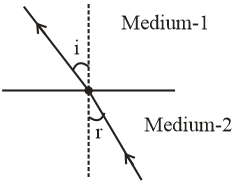
Principle of reversibility holds true for
(A) Reflection
(B) Refraction
(C) Reflection and refraction
(D) None of these
Answer
493.2k+ views
1 likes
Hint:In order to answer this question,we have to observe how the light travels after getting reflection or refraction from the surface of the medium and based upon the observations we are able to arrive at the correct answer.
Complete Step by Step Answer:
According to the principle of reversibility of light, if the path of the light is reversed after suffering a number of reflections and refractions, then it retraces its path.


Path of rays of light is reversible or light traces back it’s path while travelling in the reverse direction or a ray of light can pass in either direction along the same path.So, principle of reversibility holds true for both reflection and refraction.
Hence option C is correct answer Reflection and refraction
Note: When ray retrace its path then angle of incidence becomes angle of refraction and angle of refraction becomes angle of incidence. We can understand it by diagram easily


If ray retraces its path then i becomes r and r becomes i.
Complete Step by Step Answer:
According to the principle of reversibility of light, if the path of the light is reversed after suffering a number of reflections and refractions, then it retraces its path.


Path of rays of light is reversible or light traces back it’s path while travelling in the reverse direction or a ray of light can pass in either direction along the same path.So, principle of reversibility holds true for both reflection and refraction.
Hence option C is correct answer Reflection and refraction
Note: When ray retrace its path then angle of incidence becomes angle of refraction and angle of refraction becomes angle of incidence. We can understand it by diagram easily


If ray retraces its path then i becomes r and r becomes i.
Latest Vedantu courses for you
Grade 11 Science PCM | CBSE | SCHOOL | English
CBSE (2025-26)
School Full course for CBSE students
₹41,848 per year
Recently Updated Pages
Master Class 9 General Knowledge: Engaging Questions & Answers for Success

Master Class 9 English: Engaging Questions & Answers for Success

Master Class 9 Science: Engaging Questions & Answers for Success

Master Class 9 Social Science: Engaging Questions & Answers for Success

Master Class 9 Maths: Engaging Questions & Answers for Success

Class 9 Question and Answer - Your Ultimate Solutions Guide

Trending doubts
Give 10 examples of unisexual and bisexual flowers

Draw a labelled sketch of the human eye class 12 physics CBSE

Differentiate between homogeneous and heterogeneous class 12 chemistry CBSE

Differentiate between insitu conservation and exsitu class 12 biology CBSE

What are the major means of transport Explain each class 12 social science CBSE

Why is the cell called the structural and functional class 12 biology CBSE




